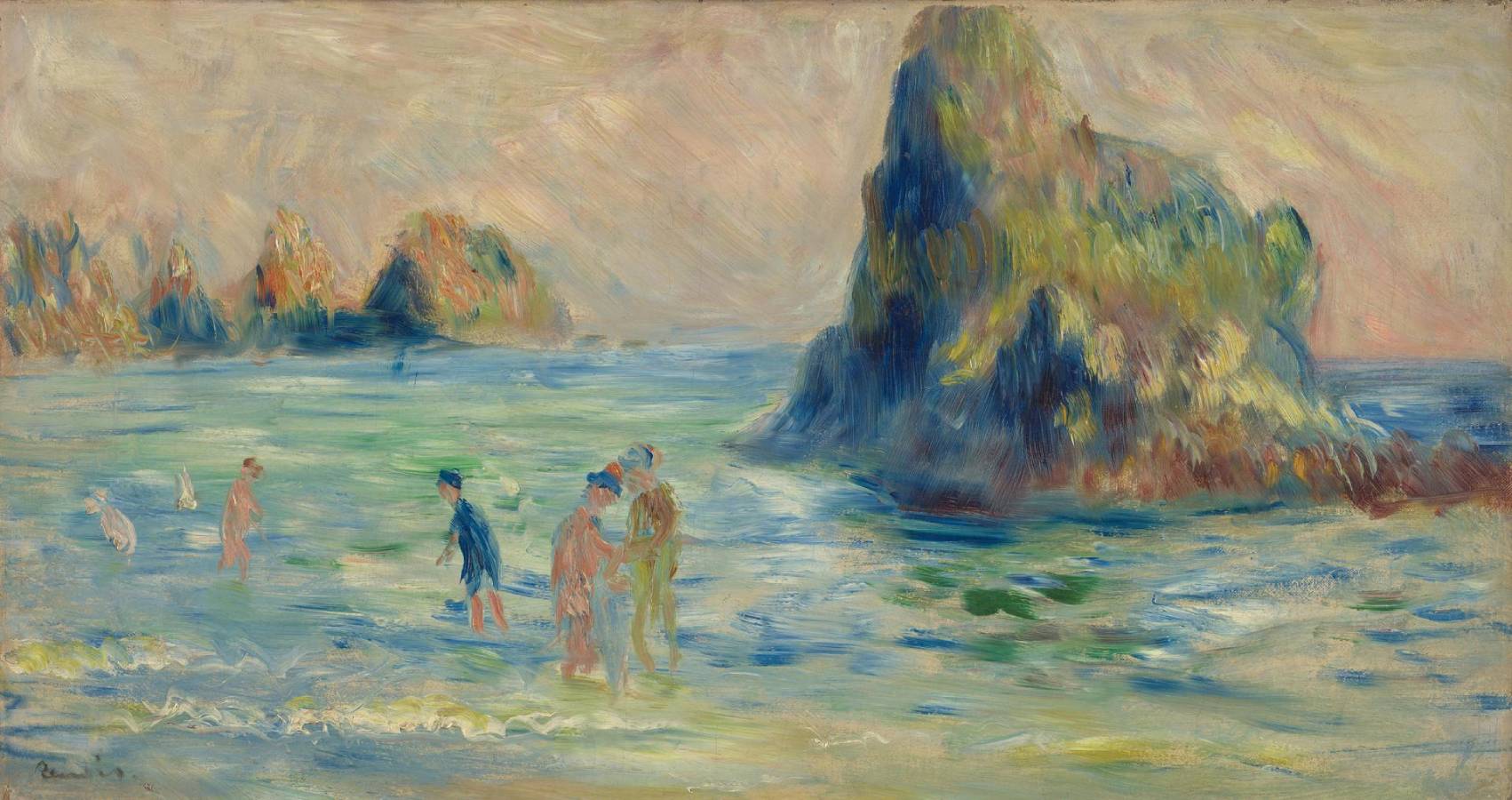Renoir, Pierre-Auguste (1841-1919)
Moulin Huet Bay, Guernesey
c.1883
Oil on canvas, 29.2 x 54 cm
National Gallery, London
This picture shows the view across Moulin Huet Bay on Guernsey, one of the Channel Islands. Renoir seems to have recreated the viewpoint fairly accurately: the rocks in the distance have been identified as ‘Les Tas de Pois d’Amont‘ while that on the right is probably ’La Surtaut‘ (or Cradle Rock). Renoir visited the island for six weeks in September and October 1883, and this is one of a group of paintings he produced during his stay. Renoir wrote with enthusiasm about the ’charming beach‘ where ’one bathes among the rocks, which serve as cabins [changing rooms] since there is nothing else; nothing prettier than this blending of women and men crowded on these rocks…. Consequently I have a source of real motifs, graceful, which I will be able to use.‘
All the paintings he made on Guernsey depicted beach and seascapes and often bathers from different viewpoints around the same bay, which is near to the island’s capital, St Peter Port. The views of the sea allowed him to observe and try to capture the reflections on the surface of the water, a theme which had long fascinated him. This was a period when Renoir was starting to break away from some of the tenets and techniques of the Impressionist approach to landscape painting, which involved working mostly in the open air in order to capture the light effects as immediately as possible. He was now returning to a more traditional discipline: making oil sketches on site and making a finished painting in the studio. As he wrote to his agent, ’I hope to return soon, around 8 or 9 October with some canvases and documents to make some paintings in Paris.‘ The ’documents’ he is referring to seem to be the studies or sketches he made on the beaches and rocks of Moulin Huet Bay.
This painting, measuring 29.2 by 54 cm, is clearly one of those sketches, and the spontaneity with which it was made is palpable. The way that Renoir has cropped the top of the rock in the foreground suggests that he planned out the composition only very roughly in advance. The four (or possibly six) figures are rendered in the most rudimentary way, with only a handful of brushstrokes, and the foam on the waves in the foreground is indicated with quick dabs and simple, wavy lines of paint. The picture also seems to have been made in one session: close examination shows that the figures were added while the paint layers of the sea were still wet.
Despite the shift in his approach to making paintings, Renoir’s primary concern still seems to centre on the way that sunlight reflects differently from the sea and the rocks, and he has used short, urgent brushstrokes of multiple bright colours to capture what he saw. The rocks, shorn of their hard sharp edges, seem to float and blur into the blues, whites and green of the sea and the strange pinky hues of the sky. (NG)
See also:
• Moulin Huet Bay | Guernsey (UK)
